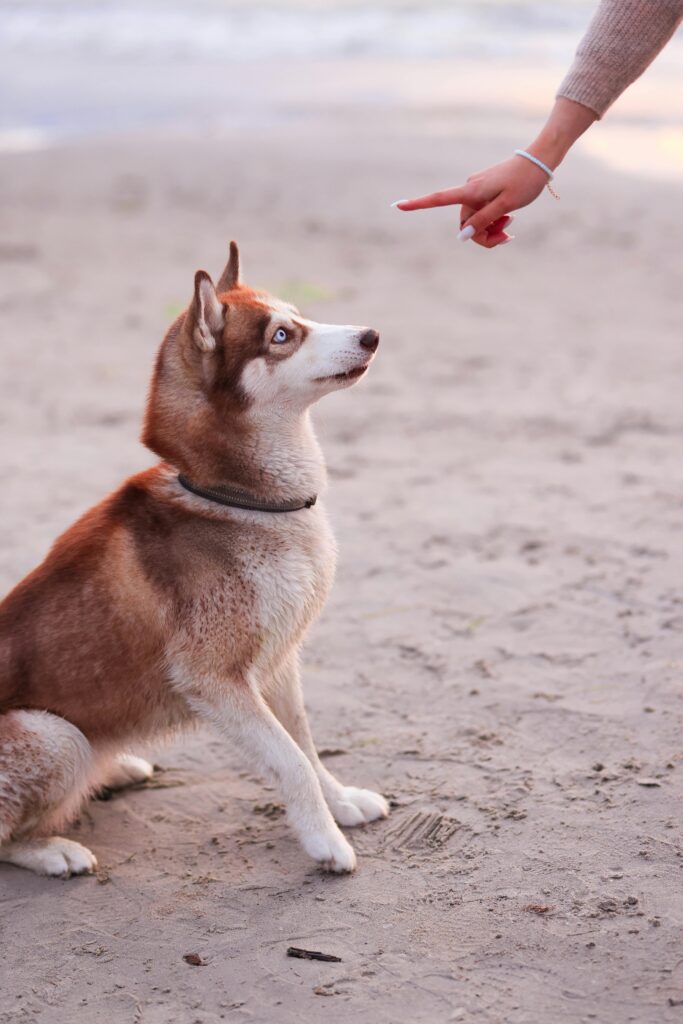Dog training is not just about teaching your dog commands, manners, and behaviors, but it also helps them to live happily and safely with you and your family. There are many types of dog training, such as crate training, potty training, etc. Similarly, we will talk about a training term, “The 3 Ps of dog training,” in this article.
But what are they?
The 3 Ps of dog training refer to Patience, Praise, and Practice. These are the keys to raising a better communicating, well-behaved, and happy dog. This technique strengthens your bond and ensures your dog is a good canine citizen.
Every “P” in “3 Ps” holds equal power in them. Patience helps you stay calm while your dog learns commands and behaviors. Praise is a positive reinforcement technique that motivates your dog by rewarding good behavior with treats, toys, and a cheerful tone every time they perform tasks according to you. This makes your training a positive experience for both you and your dog. Practice ensures consistency in your training sessions. It works by repeating the commands. The more often you engage your furry friend with positive behaviors and cues, the faster your dog will grasp and remember the actions.

The 3 Ps of dog training
1. Patience – The foundation of training
Patience is the first and most important part of the 3 Ps of dog training. Dogs are like humans. They learn at different speeds. Some may catch commands like “stay” and “sit” in a few sessions, while others need more time and sessions. It’s more like the brilliant and weak students of the class. A teacher should not lose their temper while teaching something; similarly, you should not lose your temper in expecting instant results. This can only lead to confusion and stress in your dog.
Remaining calm shows your dog the real message behind your teachings. For example, avoid frustration if your dog does not respond to the behavior right away. Instead, repeat the commands gently and give them time to perceive your goal. Patience and a humane nature help your dog in better learning without the fear of punishment. Over time, this approach creates a concrete foundation where training becomes enjoyable.
2. Praise – Encouragement through positive reinforcement
The second principle in the 3 Ps of dog training is praise. Almost every dog is naturally eager to please. Psychology says that dogs respond best when rewarded with something they love. Many types of praise work as powerful tools while training a dog, like treats, toys, cheerful tones, belly rubs, etc., and they reinforce positive actions that help your dog to understand which commands are encouraged.
The key behind praise is consistency. When you reward your dog every time they follow the commands, it ensures that the following action has something positive when performed.
For instance, if your dog comes when called, give him his favorite treat. This makes them more likely to respond the next time you call their name. By engaging your dog with praise rather than punishment, you build your dog’s confidence and create a strong bond with them.
3. Practice – Building consistency and habits
The final principle in the 3 Ps of dog training is practice. Just like people, dogs need a rhythm to master new skills. Daily practice makes your dog remember the positive behaviors and apply them when rewarded with treats and praise. Short and frequent sessions are necessary; that too should be 10 to 15 minutes twice or thrice a day. It is also crucial that your dog knows the teachings are not just for training sessions; they have to behave accordingly throughout the day, such as during playtime, before meals, and even during walks.
Practicing in different situations could be more effective cognitively. For example, if you raise different situations in front of your dog, like one family member jumping on the bed and another discouraging the behavior, your dog will get mixed signals. By constant practice, this will ensure that your dog knows what is expected, leading to long-term success.

Benefits of following the 3 Ps
Applying the 3 Ps in dog training offers many benefits that go beyond basic obedience.
• Improved Behavior
Consistent practice improves the dog’s overall behavior, eradicating the confusion and assisting your dog in grasping household rules.
• Confidence and Happiness
Praise motivates your dog to repeat positive actions, builds confidence, and makes them more eager to learn.
• Peaceful Home
With training based on the 3 Ps, everyday life becomes effortless and more enjoyable for the whole family.
• Stronger bond
Patience and praise not only foster trust and mutual respect but also strengthen the relationship between you and your furry friend.
• Safety and Control
A well-trained dog is less likely to misbehave and easier to manage in public places.

Key facts of the 3 Ps of dog training
- The 3 Ps training is bonded with pleasurable activities for better results.
- Don’t force your dog to follow the command if he is not in the mood for training.
- Research says that 10-15 minutes of training two to three times a day gives the best payoff.
- Don’t overfeed your dog.
- Don’t go for training sessions just after they wake up and after having meals.
- Sessions create a connection in the prefrontal cortex of a dog that gets strong in 40-45 days. So, be consistent with your training sessions.
Conclusion
If you don’t want your dog’s training to feel complicated and overwhelming, then apply these 3 Ps dog training rules to make the process smoother and more enjoyable. Patience gives your dog the space to learn at their own pace, praise shows them the right track in dog training, and practice helps them to develop these learnings as everyday habits.
So, next time you are working with your dog, remember that with a little consistency, encouragement, and plenty of love, you will end up with a cheerful, well-behaved companion who likes your company.

